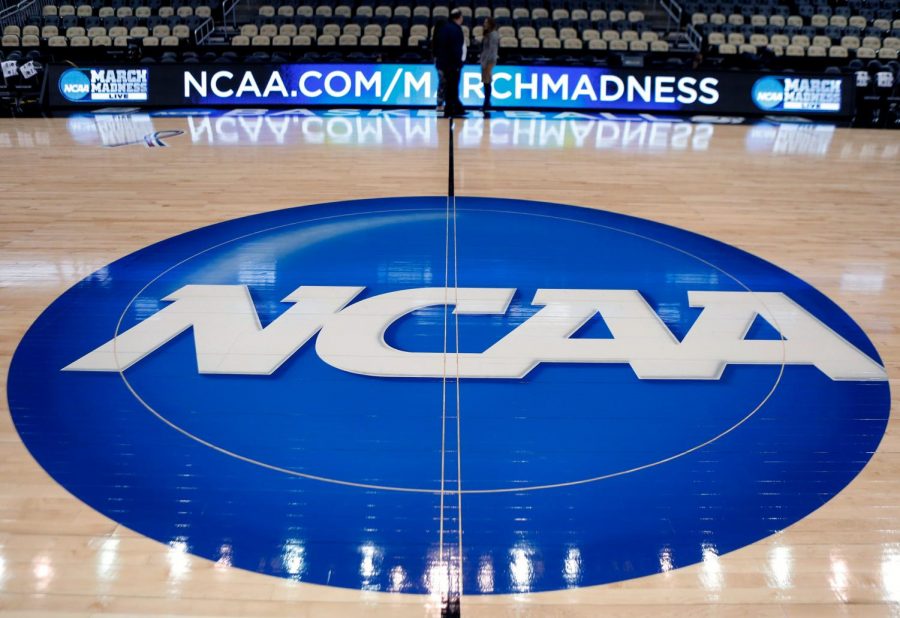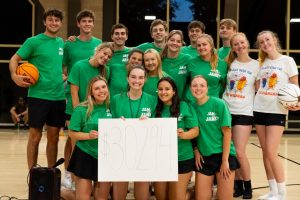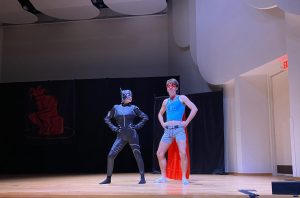NIL agreement benefits student athletes
The ability to profit from name, image and likeness is a game changer
October 14, 2021
For the first time in the 115-year history of the NCAA, student-athletes can now legally make money from sponsorships and brand deals using their name, image and likeness. Before we even debate the merit of this new rule, let me ask you: who (or perhaps what) is a student-athlete?
The term the student-athlete was introduced by the NCAA in 1956 for legal and financial reasons. It essentially protects the NCAA and university athletic departments from getting sued for underpaying their “employees”. We have never heard of student-musicians, student-biologists, student-actors. So, why student-athletes?
It’s simple: if they are students, you don’t have to pay them. If anything, scholarships, housing, free gear and access to facilities are more than fair compensation for amateurs seeking a platform to exercise their passion, right?
Not really.
In 2019, the total athletic revenue reported by the NCAA was $18.9 billion. Nobody likes collegiate sports more than the United States. We have a glorified view of amateur athletes, people who play simply for the love of the sport. Sounds like a great idea, except it’s a cover for the billion-dollar business that is collegiate athletics.
We need to question, who really profits from amateurism?
Among many athletic departments, coaching salaries account for almost half of the total expenses. The athletic director is often the highest-paid employee at the university. In reality, very little of the revenue generated from athletics actually goes to student-athletes.
The Delta Cost Project — a database that lists the finances of all American public universities — shows that, if you were to divide the revenue of collegiate sports, even the lowest-paid players would be paid twice as much as their attendance subsidies cost.
This also brings a socio-economic problem to the forefront: 78% of coaches are white, while a majority of players who play revenue-generating sports (football and basketball) are Black.
Student-athletes go to 7 a.m. practice and 4 p.m. fitness, grind on game days, to go home and finish a math quiz; they played during a global pandemic, only to get the smallest piece of the pie. When they finally get the right to use their fame to make a couple of extra dollars on the side, they are questioned by some for their integrity.
Aleeya Hutchins, a 19-year-old track athlete at Wake Forest University with over 1,000,000 followers on TikTok and 71,000 followers on Instagram recently signed a brand deal with the clothing brand Free People.
To her, and thousands of other student-athletes, the new NIL rules present an opportunity to grow off the field.
Playing a college sport is a full-time job, so not everyone will take the time to find sponsors, and that’s okay.
The starting quarterback for Wake Forest, Sam Hartman, believes that “If I play well, deals will come.”
For student-athletes who have the privilege of financial stability, NIL might be an optional side-gig. For others, it can be a game-changer.
Critics of the NIL ruling often talk about the commercialization of college sports. Sorry to break it to you, but it is already a billion-dollar business.
Others assume that NIL goes against team spirit and creates divides among star-athletes who might be making thousands of dollars and walk-ons who have no brand deals. Star-athletes have always received differential treatment, though. Some people on the team have scholarships, others do not. Some people drive to practice in their Range Rover while others ration their meal swipes to get a couple of hundred dollars more in their stipend.
In a recent Washington Post article, Victoria Jackson, a former Division 1 track athlete, emphasized the disparities between revenue and non-revenue sports. Most athletes playing non-revenue sports get partial scholarships and must find a way to cover the cost of education, all while competing at a high-stakes level, Jackson explained.
NIL opens the path to a college education and professional career that might have previously been an either-or choice. Olympic gymnasts like Simone Biles, Nastia Liukin, Gabby Douglas, and Jordyn Wieber offer a prime example of this change. They all traded their college eligibility to make money through endorsements. The trend among American gymnasts has been to pursue their career first, and then get an education after making enough money.
Now, they can potentially do both and graduate with a degree.














